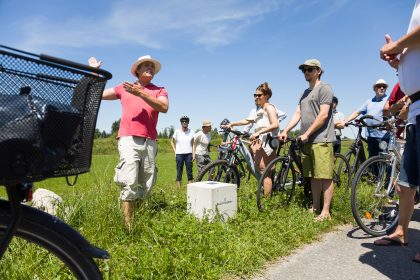Here’s our interview with Dr. Hanno Loewy, Director of the Jewish Museum Hohenems, who talks to us about current exhibitions and the disturbing story of a wartime portrait recently acquired by the museum.

Jguideeurope: Are you participating in this year’s European Days of Jewish Culture? If so, what are the events organised ? If not, what other events are scheduled for 2023-24?
Hanno Loewy: In our museum every day is a day of Jewish culture. We just started a series of exhibitions and events that are meant to shake traditional and politically charged concepts of “Identity” in the contemporary Jewish world. This year we show an exhibition about Palestinian Israelis, or precisely: four young Palestinian ladies, Israeli citizens and students in Tel Aviv. The Israeli photographer Iris Hassid accompanied the young women for seven years and portrayed their private life, their ambitions and development. Next year instead we are organizing a show about “Arab-Jews” and the discourse about this contested hyphenated “identity” concept, both historically and contemporary, represented by artistic works from the US and Germany, France and Israel and other places.

Can you present us some objects recently acquired by the museum?
From a local family the museum received a rather disturbing gift: the portrait of a German soldier of the Luftwaffe, painted in 1942, on occasion of his wedding. Instead of using painting canvas, the portrait was carried out on a fragment of a Torah scroll. Whether the portrait was produced in Germany or in Russia is not clear. Using small fragments of desecrated Torah scrolls was a widely common practice, and not the only piece in the collection of the museum. Years ago we already received another Torah fragment that was used a package for something, a soldier from Hohenems sent back to his family from Hungary, in 1944, after the deportation of most of the Jewish communities from Hungary to Auschwitz. The Hohenems address and the postal stamp still decorate the back of the Torah scroll. His CV, written after the war, mentioned also his activities in the “fight against partisans” in the Balkans and as a guard in a slave labor camp in Vorarlberg. The soldier, whose portrait covers the back of the recently acquired Torah fragment instead died on Christmas eve, December 24 1942, on a flight close to Stalingrad, even before his son was born in a town in Vorarlberg, not far from Hohenems.

How is the city of Hohenems participating in the sharing of its Jewish cultural heritage?
Part of the Jewish heritage of Hohenems is its role as a hub of Jewish refugees between 1938 and 1945. Together with the city of Hohenems and 23 other cities and towns in the region – on both sides of the Austrian-Swiss border, we created a bike trail with audio stations. This project now leads to an even more ambitious follow up. Hohenems will participate in the development and maintenance of a memorial and education center on refugees and the politics of Switzerland from 1938-1945, as an integral part of the upcoming Swiss Holocaust Memorial.
Can you share a personal anecdote about an encounter at the museum which has moved you?
Our recent opening of the show “A place of our own” turned out to be a moving reunion of Israelis, Palestinians and Jews from Germany, Austria and the US, when Daniel Kahn from Hamburg, Jake Shulman-Ment from New York and Rasha Nahas from Berlin and her band performed together in various formations, framing the opening with Samar Qupty, Iris Hassid, Majdoleen Khatib and Aya Khairieh. Samar’s moving opening speech presented a thrilling insight into the quest of Palestinian-Israelis and all the contradictions and complexities they have to go through.